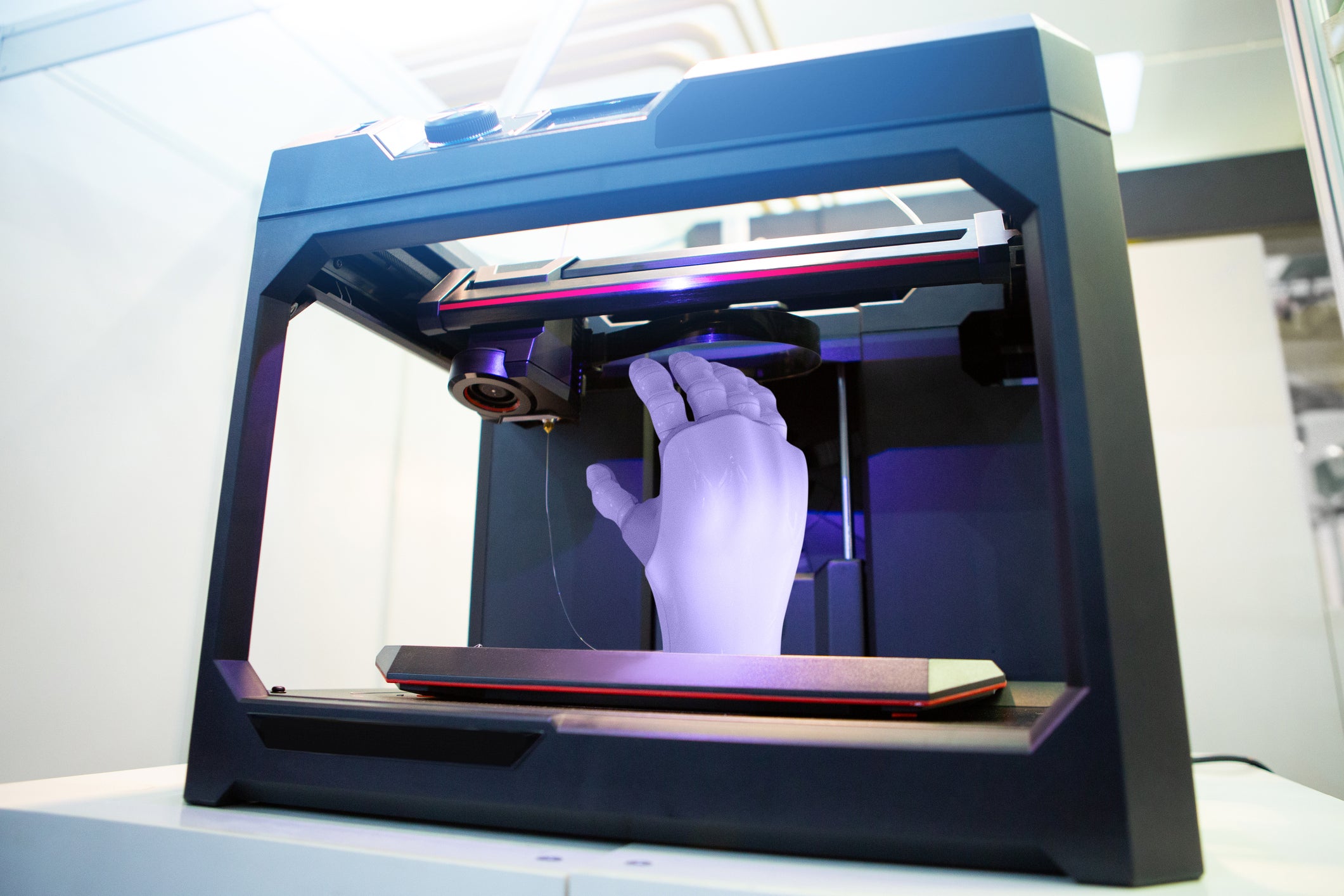
With no end in sight to the brutal war currently playing out in Ukraine, a vast number of soldiers and civilians are finding themselves in the tragic position of needing one or more prosthetic limbs.
Data published by the Ukrainian Ministry of Social Policy reported that a staggering 12,000 soldiers had some form of amputation due to the war and were waiting for prosthetics as of December 2022. As the demand for prosthetic limbs vastly increases, there’s a renewed focus on how 3D printed prostheses can meet the needs of patients in Ukraine and beyond.
Current prosthetists accommodate, design, and manufacture numerous custom devices with standard materials and limb assemblies on the market. However, some activities demand extra customization such as end limb adapters that are not currently available.
Over the past decade, 3D-printing technology has evolved from use in rapid prototyping or scale modelling to the manufacturing of complex and precise industrial products. Innovations in 3D scanning, modelling, printing, and algorithm development, together with computer-aided design (CAD) have allowed manufacturers to reduce the cost of high-tech prostheses.
“One of our military healthcare goals is to allow service members the opportunity to take part in any activity they participated in before amputation or take part in any new endeavor,” says Dr. Peter Liacouras, the Director of Services for the 3D Medical Applications Center in Bethesda, Maryland which is the largest 3D medical printing facility within the U.S. Department of Defense.
“Our typical patients are incredibly active and desire to participate in complex activities such as kayaking, ice hockey, mechanical maintenance, swimming, yoga, and other team sports. Over the past ten years, we have concentrated on filling the gaps in prosthetics through 3D printing. 3D printing has been highly flexible and applicable for specialty solutions of limited production needs. We have also used 3D printing to manufacture molds for silicone casting and custom brackets and clamps. Currently, we are investigating the use of 3D printing for orthotic braces and sockets.”
To address the sudden and overwhelming need for prosthetics in Ukraine, a partnership between the Indian prosthetic technology company Vispala and the American IT company Cisco was formed to deliver 350 3D-printed hands to war victims in the fall of 2022. Developed by Delft University of Technology’s Gerwin Smit, the so-called “100-dollar hand” is described by its creator as a “reliable, functional artificial hand that is light and easy to operate.” Due to its 3D-printed design, the prosthesis can be produced anywhere in the world and is far more affordable compared to conventional prosthetic hands.
Rhinebeck, U.S.-based company Unlimited Tomorrow is also making prosthetic arms for Ukrainians, using software from the Siemens Xcelerator portfolio including NX AM software and Teamcenter software to create a design fit for the socket that connects to the residual limb of the person.
The socket model created after the initial scan is then shipped to Ukraine hospitals for testing, and then virtual consultation is provided to check the best fit for the individual. After finalizing the parameters, additive manufacturing is used to create the final product by building it one layer at a time and the limb is then delivered to the hospitals. The company also provides training resources for the bionic limb to ensure a user friendly experience.
Huge challenges face patients in need of advanced prosthetics, such as robotic devices, mainly due to cost. A myoelectric arm engineered to leverage a patient’s natural electromyographic (EMG) signals can cost up to $100,000, while some advanced above-knee prosthetics cost $70,000. Between rapid, soaring demand and a Ukrainian population who are unlikely to be able to afford technically advanced, expensive prosthetic limbs, the average Ukrainian patient will not be able to access these devices anytime soon. But as 3-D technology advances to accommodate personalization at a high rate of speed, 3D-printed prosthetics could measurably improve Ukrainian lives immediately, regardless of one’s income level.
e-NABLE is a platform of “Digital Humanitarians” from around the world who turn to 3D printers to make free and affordable prosthetic upper limbs for adults and children. The designs used in creating these 3D-printed prosthetics are open-source, meaning they’re free to use and available to anyone with a qualified printer. There are 40,000 e-NABLE volunteers in over 100 countries, including Ukraine, who have delivered free prosthetics to an estimated 10,000-15,000 recipients.
However, while e-NABLE volunteers donate their time and technology to patients in need of prosthetic limbs, some have voiced criticism over the durability of 3D-printed devices produced by those without prior training and experience.
Researchers warned that the use of openly sourced 3D printing for prosthetics should not be media-hyped as users may have unrealistic expectations. “In war-affected and low-resources countries, the main advantages of 3D printed prosthetic hands are in the portability of the 3D printers, the cost-effectiveness of the material, the possibility of on-site production, the amputee-specific design, and the low maintenance cost,” a 2020 paper notes.
“These prosthetic hands are still not satisfactory for functional tasks for a user’s daily activities and are not replacements for other improved and advanced designs. This is a temporary solution, but 3D printed prosthetics can still help the users in their basic daily activities and improve their self-confidence.”




